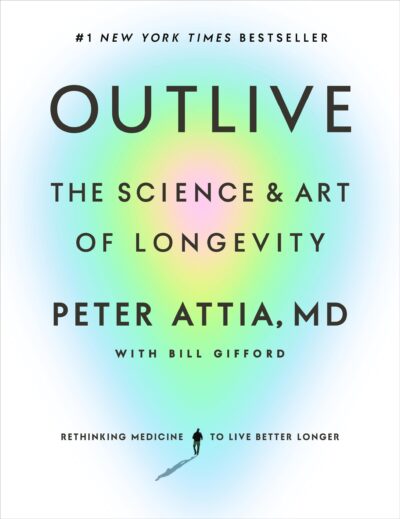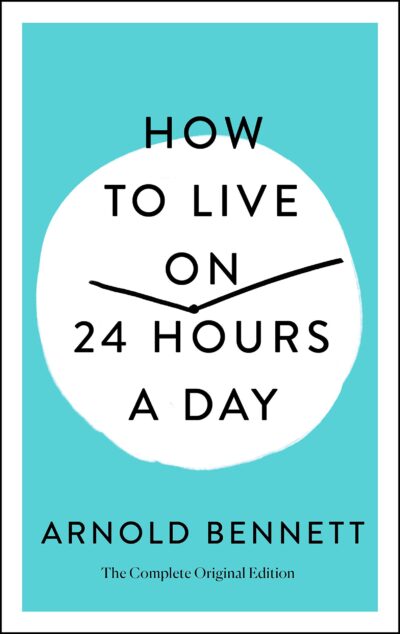68 Results with the "Self-help" genre
Adventure Fiction (1164)
Biography (435)
Business & Finance (1)
Children's Literature (124)
Comics (6)
Culture (51)
Drama (123)
Dystopian (29)
Fable (86)
Fantasy (1132)
Fantasy (203)
Fiction (1010)
Finance (1)
Gothic Fiction (12)
Historical Fiction (615)
History (122)
Horror (56)
Lifestyle (36)
Literary (404)
Literary Fiction (207)
Memoir (113)
Mystery (422)
Non-fiction (87)
Novel (549)
Paranormal Fiction (96)
Philosophical (182)
Philosophy (45)
Poetry (249)
Political Fiction (14)
Politics (42)
Practical (32)
Psychological (4)
Psychological Thriller (108)
Relationship (6)
Romance Novel (716)
Romantic Melodrama (14)
Satire (91)
Science (46)
Science Fiction (345)
Society (65)
Society (2)
Spiritual Growth (1)
story (2)
Thriller (704)
True Crime (56)
view (11)
Women's Fiction (2)
Young Adult (233)
-
 Chapter 10 emphasizes the profound and often hidden impact of developmental trauma, underscoring how adverse childhood experiences shape not only a child's emotional development but also their physiological and psychological growth. These early maltreatments—be they physical, emotional, or neglectful—create lasting scars that affect brain structure and function. The consequences are far-reaching, as these children, unable to process their early-life experiences healthily, struggle with numerous…
Chapter 10 emphasizes the profound and often hidden impact of developmental trauma, underscoring how adverse childhood experiences shape not only a child's emotional development but also their physiological and psychological growth. These early maltreatments—be they physical, emotional, or neglectful—create lasting scars that affect brain structure and function. The consequences are far-reaching, as these children, unable to process their early-life experiences healthily, struggle with numerous…-
360.1 K • Ongoing
-
-
 Chapter 12: Training 101: How to Prepare for the Centenarian Decathlon, explores a well-rounded approach to exercise, emphasizing its role in extending healthspan and preventing chronic illnesses. It underscores the importance of integrating aerobic endurance, strength training, and stability exercises to support long-term health and injury prevention. The discussion highlights how each element contributes to maintaining physical resilience, ensuring that the body remains capable and strong throughout the…
Chapter 12: Training 101: How to Prepare for the Centenarian Decathlon, explores a well-rounded approach to exercise, emphasizing its role in extending healthspan and preventing chronic illnesses. It underscores the importance of integrating aerobic endurance, strength training, and stability exercises to support long-term health and injury prevention. The discussion highlights how each element contributes to maintaining physical resilience, ensuring that the body remains capable and strong throughout the…-
87.7 K • Ongoing
-
-
 Chapter V raises a sharp question that most people avoid asking: how much of our day is actually used with intention? It begins by drawing attention to our morning routines, especially during the commute. Many individuals fill this time with newspapers, not necessarily for insight, but out of habit. These moments pass quickly, often forgotten as soon as they occur. The author challenges the value of this ritual, pointing out that rushed news digestion offers little depth or lasting understanding. There’s…
Chapter V raises a sharp question that most people avoid asking: how much of our day is actually used with intention? It begins by drawing attention to our morning routines, especially during the commute. Many individuals fill this time with newspapers, not necessarily for insight, but out of habit. These moments pass quickly, often forgotten as soon as they occur. The author challenges the value of this ritual, pointing out that rushed news digestion offers little depth or lasting understanding. There’s…-
62.8 K • Ongoing
-
-
Chapter
EPILOGUE: CHOICES TO BE MADE
 EPILOGUE: CHOICES TO BE MADE We are on the verge of becoming a trauma-conscious society. Almost every day one of my colleagues publishes another report on how trauma disrupts the workings of mind, brain, and body. The ACE study showed how early abuse devastates health and social functioning, while James Heckman won a Nobel Prize for demonstrating the vast savings produced by early intervention in the lives of children from poor and troubled families: more high school graduations, less criminality,…
EPILOGUE: CHOICES TO BE MADE We are on the verge of becoming a trauma-conscious society. Almost every day one of my colleagues publishes another report on how trauma disrupts the workings of mind, brain, and body. The ACE study showed how early abuse devastates health and social functioning, while James Heckman won a Nobel Prize for demonstrating the vast savings produced by early intervention in the lives of children from poor and troubled families: more high school graduations, less criminality,…-
360.1 K • Ongoing
-
-
Chapter
Prologue: Facing Trauma
 Prologue: Facing Trauma Trauma can touch anyone, regardless of their circumstances or environment. It’s not limited to soldiers returning from war or those living in conflict zones like Syria or the Congo. The reality is that trauma affects our families, friends, and even ourselves. According to research from the Centers for Disease Control and Prevention (CDC), one in five Americans was sexually molested as a child, one in four was beaten by a parent, and one in three couples experiences physical…
Prologue: Facing Trauma Trauma can touch anyone, regardless of their circumstances or environment. It’s not limited to soldiers returning from war or those living in conflict zones like Syria or the Congo. The reality is that trauma affects our families, friends, and even ourselves. According to research from the Centers for Disease Control and Prevention (CDC), one in five Americans was sexually molested as a child, one in four was beaten by a parent, and one in three couples experiences physical…-
360.1 K • Ongoing
-
-
Chapter
Don’t Make Assumptions
 Chapter 4: Don’t Make Assumptions, the third agreement in The Four Agreements by don Miguel Ruiz, a principle that addresses the profound impact assumptions can have on our lives. Ruiz explains that making assumptions often leads to misunderstandings, unnecessary conflict, and emotional distress. Many of the problems we face in relationships and life stem from the habit of assuming we know what others are thinking or what they mean by their actions, often without confirming or asking for clarification.…
Chapter 4: Don’t Make Assumptions, the third agreement in The Four Agreements by don Miguel Ruiz, a principle that addresses the profound impact assumptions can have on our lives. Ruiz explains that making assumptions often leads to misunderstandings, unnecessary conflict, and emotional distress. Many of the problems we face in relationships and life stem from the habit of assuming we know what others are thinking or what they mean by their actions, often without confirming or asking for clarification.…-
90.9 K • Ongoing
-
-
 Chapter 11 explores the complexities of traumatic memory, using the case of Julian, a man who had repressed memories of being sexually abused by a Catholic priest, as a pivotal example. The story is a powerful illustration of how trauma can lie dormant for years, only to resurface unexpectedly, often triggered by a single event or memory. Julian’s experience, marked by vivid images and overwhelming emotions, reflects the fractured nature of traumatic memory, where the mind struggles to process and…
Chapter 11 explores the complexities of traumatic memory, using the case of Julian, a man who had repressed memories of being sexually abused by a Catholic priest, as a pivotal example. The story is a powerful illustration of how trauma can lie dormant for years, only to resurface unexpectedly, often triggered by a single event or memory. Julian’s experience, marked by vivid images and overwhelming emotions, reflects the fractured nature of traumatic memory, where the mind struggles to process and…-
360.1 K • Ongoing
-
-
 Chapter 13 delves into the essential role of maintaining physical fitness as we grow older, with a particular focus on injury prevention through stability training. A significant factor contributing to the decline in physical activity in later years is the presence of injuries that were never fully rehabilitated. These lingering injuries often disrupt exercise routines, leading to chronic pain, limited mobility, and a general decline in physical capabilities. The author emphasizes how injuries, whether…
Chapter 13 delves into the essential role of maintaining physical fitness as we grow older, with a particular focus on injury prevention through stability training. A significant factor contributing to the decline in physical activity in later years is the presence of injuries that were never fully rehabilitated. These lingering injuries often disrupt exercise routines, leading to chronic pain, limited mobility, and a general decline in physical capabilities. The author emphasizes how injuries, whether…-
87.7 K • Ongoing
-
-
 Chapter VI begins with a compelling invitation to reclaim time—not by adding more hours to the day, but by using the ones we already have with greater intent. The author doesn’t ask for a dramatic life overhaul. Instead, he proposes a modest challenge: devote just over an hour daily to nourishing the mind. This effort, though small in comparison to the day's total span, has the potential to unlock deeper engagement with life. It's a question of investment—one that promises immense return without any…
Chapter VI begins with a compelling invitation to reclaim time—not by adding more hours to the day, but by using the ones we already have with greater intent. The author doesn’t ask for a dramatic life overhaul. Instead, he proposes a modest challenge: devote just over an hour daily to nourishing the mind. This effort, though small in comparison to the day's total span, has the potential to unlock deeper engagement with life. It's a question of investment—one that promises immense return without any…-
62.8 K • Ongoing
-
-
Chapter
ACKNOWLEDGMENTS
 ACKNOWLEDGMENTS This book is the fruit of thirty years of trying to understand how people deal with, survive, and heal from traumatic experiences. Thirty years of clinical work with traumatized men, women and children; innumerable discussions with colleagues and students, and participation in the evolving science about how mind, brain, and body deal with, and recover from, overwhelming experiences. Let me start with the people who helped me organize, and eventually publish, this book. Toni Burbank, my…
ACKNOWLEDGMENTS This book is the fruit of thirty years of trying to understand how people deal with, survive, and heal from traumatic experiences. Thirty years of clinical work with traumatized men, women and children; innumerable discussions with colleagues and students, and participation in the evolving science about how mind, brain, and body deal with, and recover from, overwhelming experiences. Let me start with the people who helped me organize, and eventually publish, this book. Toni Burbank, my…-
360.1 K • Ongoing
-
- 1 2 … 7 Next
